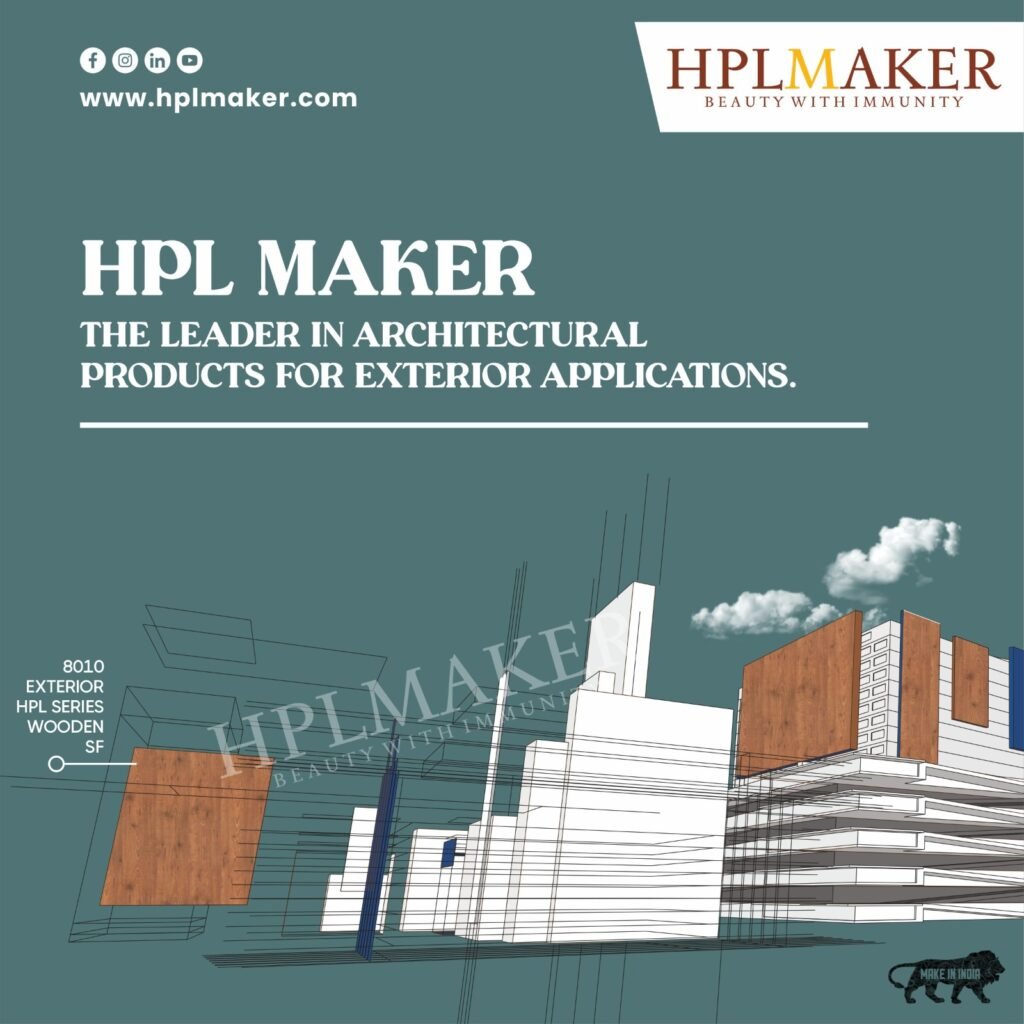Table of Contents
ToggleIs HPL termite proof?
HPL and its multi-fold properties –
Termite proof – A characteristic that made HPL sheet noteworthy!
HPL is gaining popularity due to its multifold properties, decent pricing, and aesthetic appeal. The numerous characteristics of HPL make it a suitable choice for both residential and commercial projects and many people are now trusting HPL sheets for uplifting their home designing game.
One of the major challenges faced by the laminate industry is making their products long-lasting, and to address this concern, HPL Maker is manufacturing durable, all-weather proof, and termite-proof HPL sheets. Before going further, let us first understand the composition of HPL sheets:
Understanding HPL Sheets:
Why termite is a threat to laminates?
HPL sheets are created by fusing layers of kraft paper that have been soaked in resin together under high pressure and heat. The top layer provides a decorative surface with a range of colors, patterns, and textures, while the core layers provide strength and stability. A translucent overlay that protects the surface from UV radiation, stains, and scratches lengthens its longevity.
Termites pose a significant threat to wooden structures and furniture because they can consume the cellulose found in the wood and other organic materials used in these products. While laminates are often considered resistant to wear and moisture, they are not immune to termite infestations and can cause extensive damage by hollowing out the core material, which can lead to buckling, warping, and ultimately, the failure of the laminate. Additionally, the damage caused by termites is often hidden beneath the surface, making it difficult to detect until significant harm has been done.
This silent destruction not only diminishes the aesthetic and functional value of laminate products but can also result in costly repairs or replacements. Therefore, proper preventive measures, such as regular inspections and the use of termite-resistant materials, are crucial to protect laminates from these pests.

What made HPL sheets Termite Proof:
Factors to consider -
Non–Porous Surface: HPL sheets don’t offer termites a conducive habitat to grow because of their non-porous surface. As HPL sheets have a non-absorbent surface, termites are deprived of the moisture they need to survive.
Chemical Composition: Chemical additives that ward against pests like termites are frequently incorporated into the resins used to make HPL sheets. Insecticides and insect repellents that prevent termite infestation are examples of these additions.
Hard Surface: Termites find it challenging to gnaw through or puncture HPL sheets due to their dense, hard surface. Because of its sturdy construction, termites are unlikely to inflict much damage, even if they manage to dig into the substance.
No Food Source: Termites do not find HPL sheets to be a food source unlike wood or other cellulose-based materials. Cellulose, which is lacking from HPL sheets and is present in wood, paper, and other organic materials, is the main food source for termites.
“HPL sheets provide great resistance to termite infestation due to their non-porous surface, hardness, chemical makeup, and absence of cellulose content. Implementing HPL sheets reduces the possibility of termite damage and offers a dependable and long-lasting alternative for interior design and building projects. For guaranteed termite protection in buildings using HPL sheets, it is necessary to uphold appropriate building principles and address any potential entrance points or vulnerabilities. “


